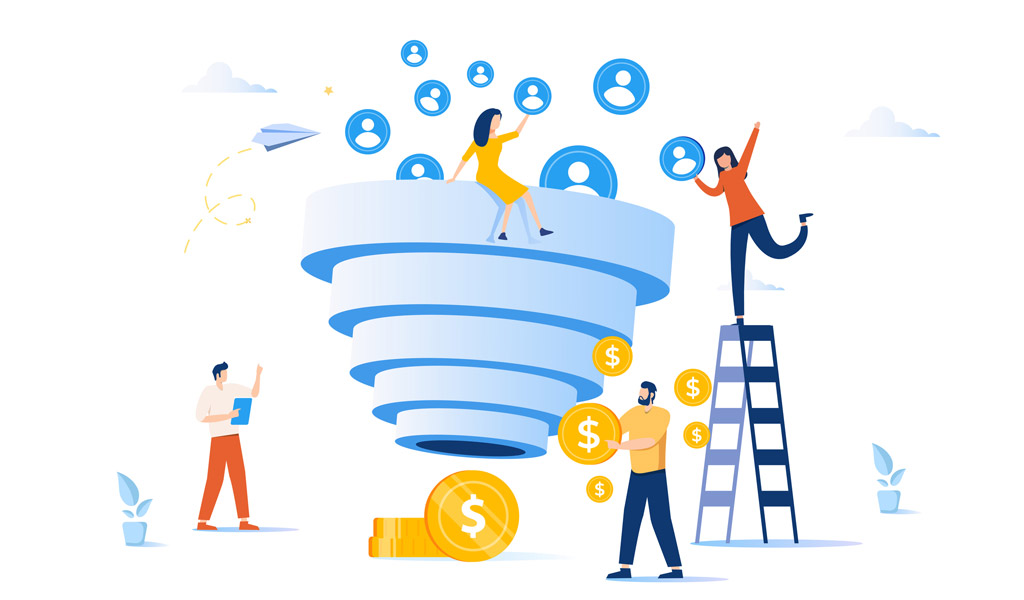Sales Life Cycle. Everyone wants to shorten their sales cycle. According to a Salesforce study, 25% of sales teams believe shortening the sales cycle’s length is among their most crucial objectives in the coming year. With a short sales cycle, customers spend less time in the sales funnel and buy sooner. The less time your leads spend in the sales funnel, the higher the ROI for your company. It just makes sense! But how can you shorten your sales life cycle? That’s what we’re going to be looking at today. Let’s get started.
Why is Your Sales Cycle so Long?
Many sales teams believe their sales cycle is too long and it is getting in the way of speedy sales. There are a variety of reasons your sales cycle is too long, including:
It’s Too Formal
A more formal and less flexible sales cycle will take more time to get through. The customers who want to race through it simply won’t be able to. They have to go through each step. Research by Salesforce found that a more relaxed tender process led to a quicker sales process. For example, the UK had the fastest sales process on average compared with all other regions. Why? Because only one in five businesses use a formal tender process, and email is a preferred method of communication when it comes to sales. By contrast, Germany has a much longer sales cycle on average, likely due to most businesses still using a formal quotation process.
Sales Reps Don’t Spend Enough Time Selling
Research from Pace Productivity found that sales reps typically only spend 22% of their week actively selling. The rest of the time is spent doing administrative tasks, chasing cold leads, or creating content. If sales reps have to spend too much time on other tasks, then they can’t focus on selling. This is why automation is such a game-changer in sales. With automated emails and content disruption, sales reps get freed from doing time-consuming administrative tasks.
Micromanagement From Sales Leaders
A big part of sales is the flow of the sales process. Sales reps must be able to move through each task seamlessly and without unnecessary interruption. However, over the last few years, there has been a rise in micromanagement by sales leaders. These sales leaders are often being micromanaged themselves by the senior executive team.
This usually comes from a well-meaning place. The senior executives want to manage the numbers so they can consistently bring reports to the board. They watch over and direct sales leaders who then push this pressure onto their sales reps to achieve this goal. The problem is, it doesn’t work. The more micromanagement that goes on, the more the sales reps are pulled away from selling and instead get caught up doing other tasks.
Agency is an essential part of any job. If employees don’t feel that they have control over their actions, they won’t think they deserve their achievements and rewards. And if you don’t believe you can be accredited with your successes, then there’s little motivation to achieve more success.
Risk Aversion
We like to call this one “too many cooks spoil the soup”. There’s an ever-growing culture of risk aversion in business, which can be felt in every department. To avoid risks, many companies are opting to share decision making across several teams. While it’s true that this can help prevent disasters, it also slows progress. It creates a culture of indecision and expected delays. One study found that in B2B sales, an average of 6.8 people are involved in every purchase. It stands to reason that the more people that have to be involved in a purchase, the longer the sales process will be.
The Stages of a Typical Sales Cycle
Prospect: The attracting leads stage. This is where you listen to your leads and learn what they want (and what problems they have that you can potentially fix).
Connect: This is where leads sign up for offers you put forward. You can start using the information you learned in the prospecting phase.
Qualify: This is where you determine whether your lead has the intent to buy your product. At this stage, you will try to gather more information about the lead to figure out their intent to purchase.
Present: You present your offer, your product or service, as a solution to their needs.
Close: You push to proceed with the sale. The lead now has all the information they need to make a decision and should be ready to make a sale.

Ways to Shorten the Sales Cycle
Identify Where Your Sales Process is Ineffective
First things first, you need to identify where your sales process is ineffective or taking too long. In the last section, we looked at the reasons why your sales process might be too long. However, that list wasn’t exhaustive, and it could be a range of reasons. One study found that 92% of companies believe they have an inadequate sales process, but most had issues identifying where it was ineffective. This can often be the most challenging part. Take a closer look at all the stages in your sales cycle to see where things are getting slowed down.
Align Content With Progression
Your content must be aligned with the level of progression in the sales cycle. Have you ever received an email asking you to sign up for a newsletter from a company you’re unfamiliar with? This rarely goes down well with customers. It comes across as arrogant and pushy. If you push content to customers before they are ready for it, your email will end up in the trash can, and you’ll probably never hear from them again.
A robust content strategy is key here. It’s a good idea to focus on educational content. How can your company add value to your customers separate from your product? Are you industry leaders in a particular niche? If so, you can send information content from your leadership team, addressing key industry issues. This helps grow your brand authority and trust. And it also makes you look less desperate for a sale. Here are some things you should consider:
- The first action the lead takes – The first action you lead takes will tell you a lot about where they are in the sales funnel. For example, if they sign up for a trial straight away, you can assume that they have already researched the product and are somewhat knowledgeable. It would be redundant to send them introductory information you might send to other leads.
- Scale back once qualified – If a lead becomes qualified, or is close to becoming qualified, then it’s probably time to scale back on marketing emails. Emails in this stage can start to annoy the customer. They also add less value than in the earlier stages. Instead, you should assign them a dedicated sales rep to guide them through the final stages.
Personalization
Personalization is the key to successful marketing in the digital age. In today’s world, our inboxes are swamped with hundreds of emails at any one time. We’re always getting emails we’re not interested in and end up unsubscribing. However, the more personalized the email is, the less likely we are to ignore it. Here are some personalization tips:
Putting a face to your brand: Cold and corporate is out, and personal connections are in. Your employees must act as brand promoters that represent the face of your company. It’s a good idea to put photos on your website so your customers can put a face to a name. Similarly, video-calling or employee profiles in live chat complete with an image can help this effort.
Connecting with clients during a long sales process: Some companies opt to engage on social media with the companies they are targeting. For example, you can tag them in photos or engage in conversations about critical things happening in the industry. Please don’t make it all about sales, but about establishing a relationship outside of the selling process.
Stimulating a warm conversation: The language you use is critical to your success. You want to be professional but also friendly and engaging. Try to be as candid as possible, avoiding overused buzzwords or corporate speak.

Automate
Technology is your friend! Once you find out where you are being slowed down, you can use software to manage tasks in these areas. Here are some tips:
- Use AI to find your best content – Artificial intelligence and data analysis can tell you what content has the highest engagement. It can do this down to the individual account level, thereby helping you make better decisions.
- CRM – Are you getting the most from your CRM software? CRM systems often have potent tools that can be utilized for a range of sales needs. Make sure you’re using your system to its full potential, or get one that offers more.
- Collect the right data – Data is the key to unlocking the ideal sales cycle. You have to ensure that you are collecting enough data and collecting the correct data. If there’s data to be collected, then find a way to capture it and analyze it.
Get Rid of Bottlenecks
When you go through your sales process step by step, you should highlight the triggers (actions) that cause the customer to move on to the next step. See if there’s any waste or bottlenecks here. Is there a common place where your customers all slow down? Is it because they find that step time-consuming or frustrating?
Offer Better Customer Experience
Sales is as much an art as it is a science. You’re dealing with people, and people are famously difficult to predict. If sales reps try to push leads through to the next stage before they are ready, it can damage the relationship and kill the deal. This is where the art comes in. Just because a lead has completed certain actions doesn’t always mean they are ready for the next step. To see if they are really prepared, you need to talk to your customers and have an open communication line. Offer a great customer experience, and you’ll always know when the customer is ready for the next step.
Develop “Offers” that Result in Meetings
It’s a good idea to develop tactics that drive meetings with your leads. Meetings can often speed up the sales process and help the customer skip through several steps at once. They are also great for developing and deepening interpersonal relationships at play. You can do this by offering free technology assessments and other things where you can add value.




















